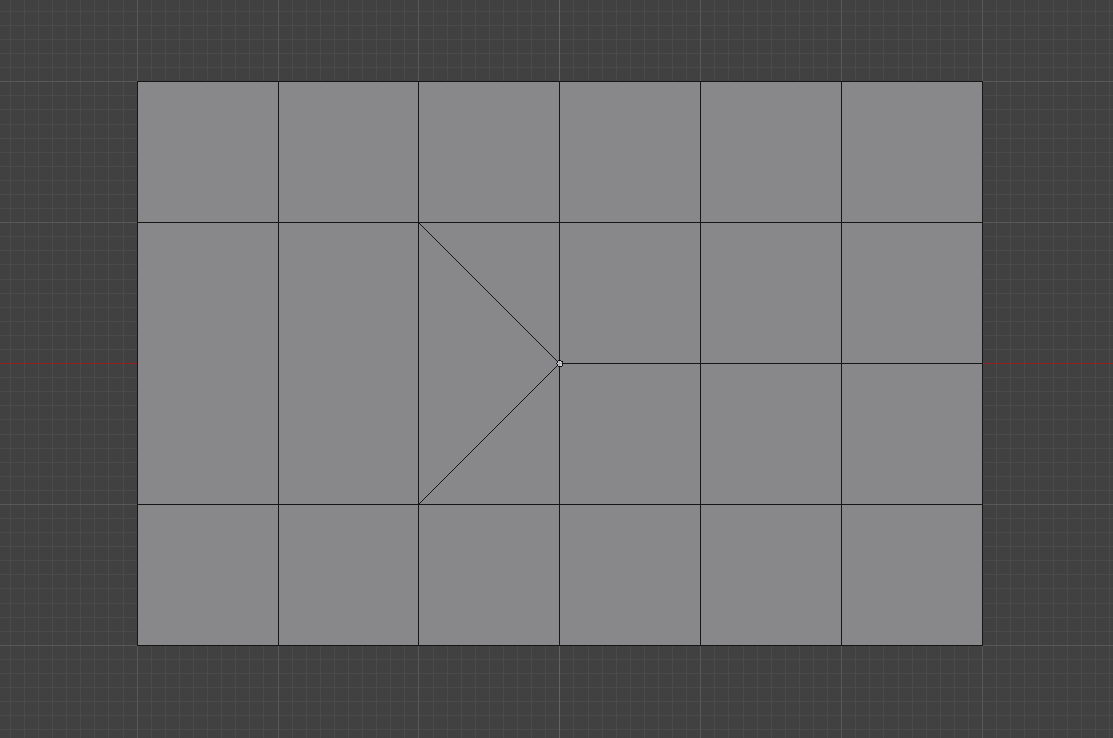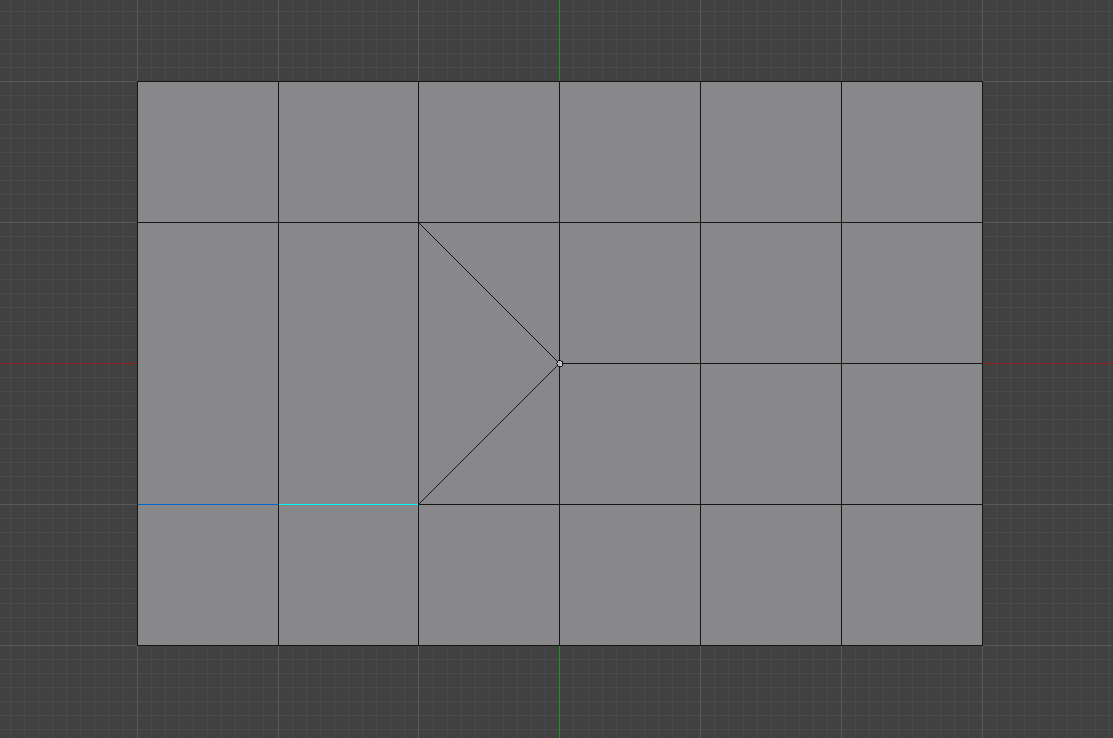There's a big misunderstanding regarding tris. A lot of people say that you should never use tris, and they're somewhat right. But the main reason behind not using tris, is because they can be harder to work with, and they can cause issues with deformations. Although, before exporting/baking your model for use in games, it's advisable that it's triangulated anyway.
But theThe thing is, people tend to go to overly extreme lengths to avoid tris, when in reality, adding a tri is a lot better than trying to work around having one.
One other thing to keep in mind, is that all faces are converted to triangles at rendertime anyway. You aren't speeding up rendertimes (If I'm not mistaken, some of the optimizations that are being added to blenders viewport are actually for quads only) but by using tris, but you are controlling how the faces are cut up (this is the big thing that effects shading).
Tris also cut off edge loops. So if you do something like this
and then you try to select one of the edges,
it will stop at the triangle. The same thing happens for both Tris, Poles, and N-Gons.
So, advantages to using tris
- Can keep topology simpler in certain situations.
- Much more effective at controlling shading on low poly models
- Stops edge loops
- Controls how the surface will be cut up, instead of allowing it to be randomly done at render time.
Disadvantages of tris
- Can be harder to work with at times
- Can cause issues with deformations and subserf
- Stops edge loops
In games however, There is a stage in the process where triangulation is often unavoidable and should be carefully embraced.
There is a point in the video game workflow where your game model should be completely triangulated, because most game engines will robotically do this for you if you don't, with often undesired results. Some concave surfaces will become convex and vise versa, while some unwanted/useless loops form from the resulting triangulation. You'll want to triangulate it before you export, and DEFINITELY before you bake normals. Here are two big things that can go wrong if you don't.
surface/color baking, especially normal baking, where you transfer details from Hi-res objects onto low res objects are very dependent on how a model has been triangulated. Rays cast from the high res surface to the low, virtually filling in low res gaps with information. So that if you export a model and it's map out to a different program, the triangles may be automatically cut differently to how they were in the other program, resulting in unwanted artifacts.
Surprising deformations/shape, The way that you animated/modeled the object may appear different because of the engine's method of triangulation, 'what you see is what you get' should be the aim. (this may need a better explanation.)


